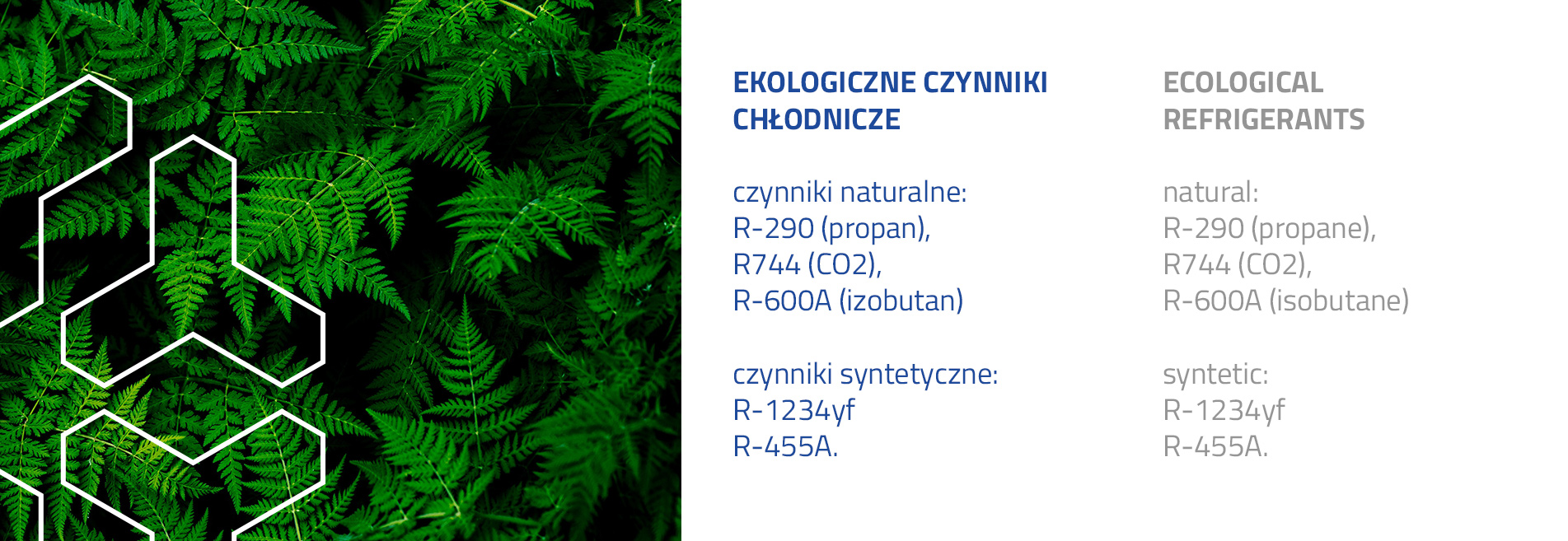

Are you planning to replace refrigeration devices in your store? And did you know that some substances used in refrigeration systems (called refrigerants) will be withdrawn from the market at the end of 2021? It is worth getting ready for these changes to choose equipment today that will serve you for a long time and save your time and money, because it will not require modernization or replacement.
What is a refrigerant and where is it used?
A refrigerant is a thermodynamic medium that is involved in heat transfer. It is used in trade and services, because it is found, among others in refrigeration equipment such as upright refrigerated cabinets, counters, confectionary display cases. So if you have a shop or restaurant, you have certainly come across this term already.
Unfortunately, refrigerants are not indifferent to the environment and our health, so it is worth knowing which substances can be used in devices and which will be phased out soon.
Why should you be interested in this?
Because According to the Regulation of the European Parliament No. 517/2014 of April 16, 2014, the European Union has introduced restrictions on the use of fluorinated greenhouse gases (refrigerants) in cooling systems. Certain refrigerants, such as freons, which significantly affect the greenhouse effect, have been withdrawn (or will be - according to the schedule).
All refrigerants currently used in commercial refrigeration are safe for the ozone layer (ODP is 0). The decisive advantage of natural factors is, however, a much lower potential for creating the greenhouse effect (measured by the GWP index). Unfortunately, natural refrigerants also have their drawbacks.
There is no perfect refrigerant
Factors with low GWP (global warming potential) are more flammable. Additionally, the better their energy value, the higher their toxicity. Unfortunately, no substance has yet been found that would meet all the requirements for an ideal refrigerant:
- should have good thermodynamic properties,
- should be safe for people and the environment,
- should not cause corrosion.
For anyone who uses refrigeration equipment at work and benefits from the air conditioning, it is important to purchase a device that meets the requirements of the regulation. There are 3 important benefits for you:

So how do you choose a device with the right refrigerant for you?
As you surely know, the commercial use of refrigerants in refrigeration and food distribution varies depending on the type and design of the particular device. Hermetically sealed installations are adapted to the use of factors with low GWP. A small amount of refrigerant (up to 150 g) is enough for the proper operation of such a system, thanks to which they are safe for employees and customers.
From the beginning of 2020, manufacturers and importers are not allowed to market devices filled with the following factors: R-404A, R-507A, R-23, R-125 and R-143A. Commercial equipment containing fluorinated greenhouse gases with a charge greater than 40 tonnes of CO2 equivalent cannot be serviced.
When buying a refrigeration device today, take into account that in 2022 the following will be phased out: R-32, R-134A, R-407C, R-410A, R-448A, R-449A, R452A. Don't worry if your devices run on these factors. Qualified personnel will be able to continue servicing them.
So what factor is it worth investing in? The most popular and commonly used coolants that will not be phased out soon are:
When familiarizing yourself with the distributor's offer, pay attention to what refrigerant is in the device. This way you will save yourself additional costs. You will certainly notice that some devices can work with various refrigerants. Which option to choose? Here the GWP indicator will help and it should be as low as possible.
It is worth remembering that the operation of a refrigeration device requires regular cleaning of its parts and servicing of the system. Even more stringent is the approach to devices with recalled coolants. According to the regulation, all service technicians and installers who work with fluorinated greenhouse gases must have the appropriate qualifications (UDT F-gas certificate).
What's next?
As you surely know, regulation and the phasing out of harmful substances are primarily aimed at protecting the environment. In January 2019, the Kigali Amendment entered into force, which aims to reduce the production and consumption of these climate-damaging substances by 85% by 2045.
Detailed characteristics of individual factors and the schedule of their withdrawal can be found on the poster prepared by the PROZON Climate Protection Foundation in Poland.